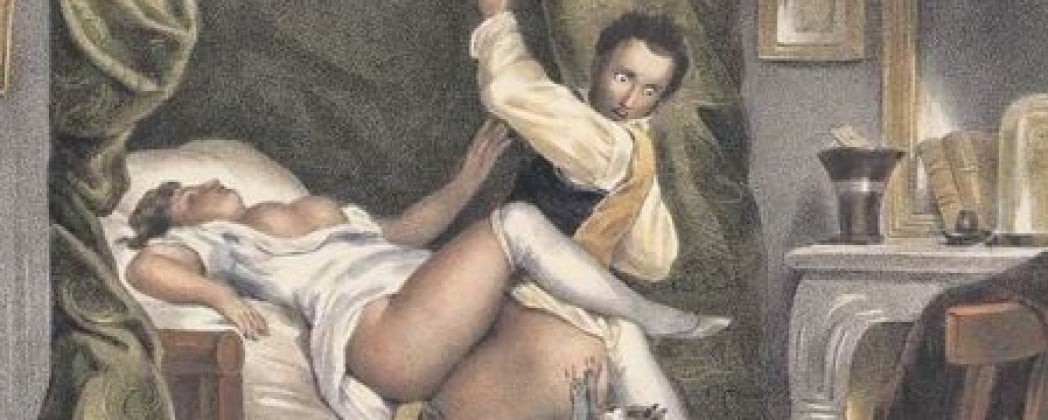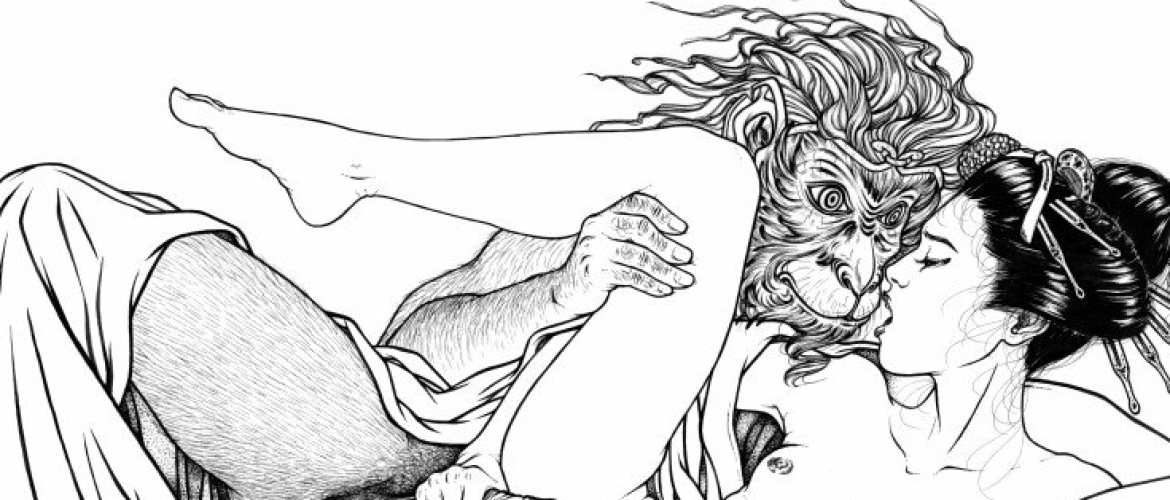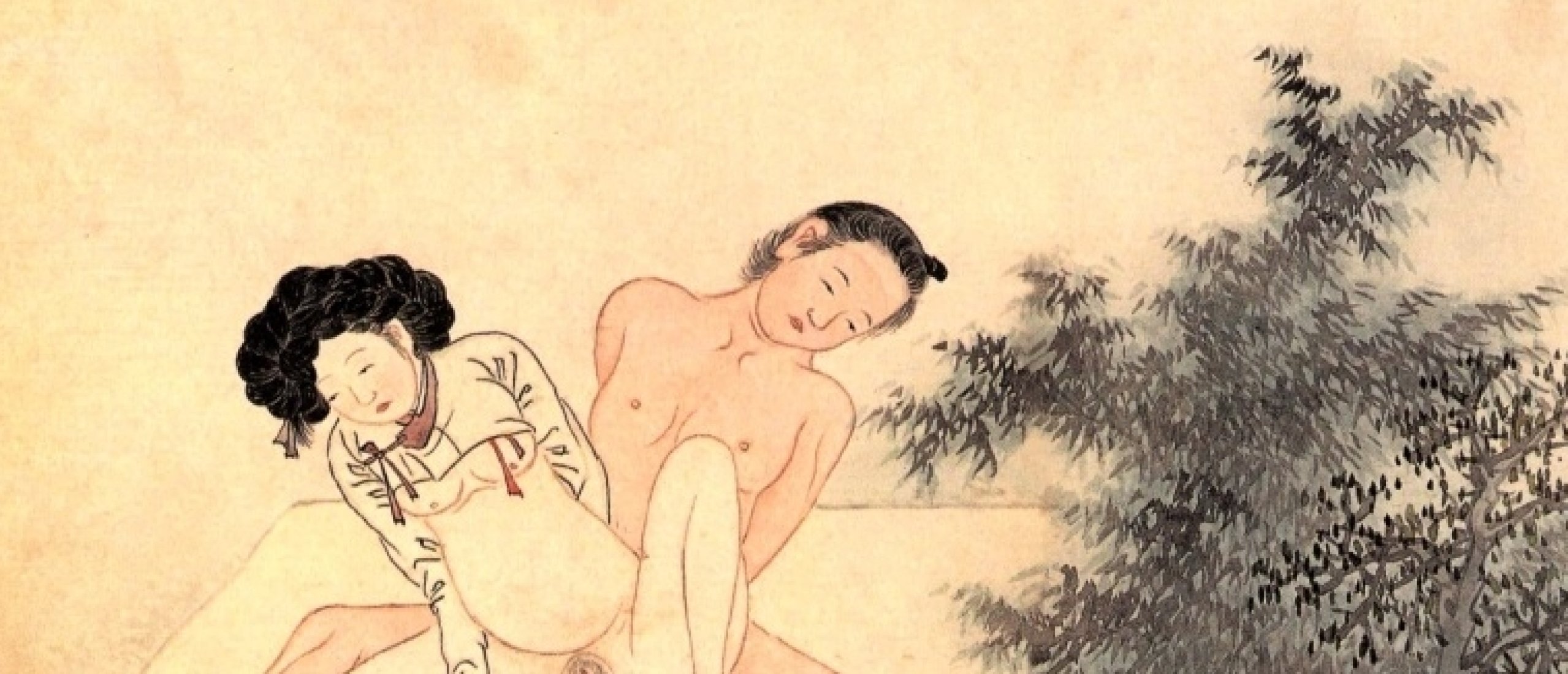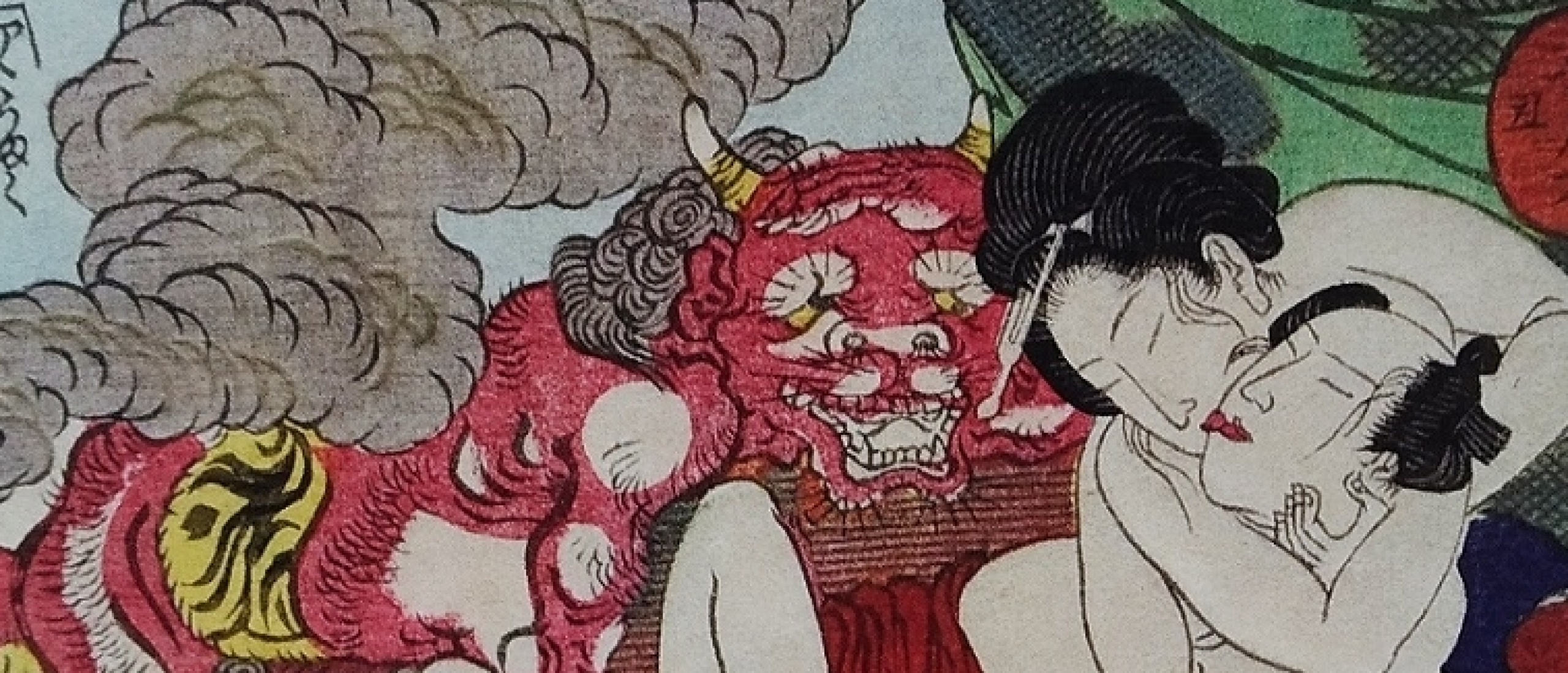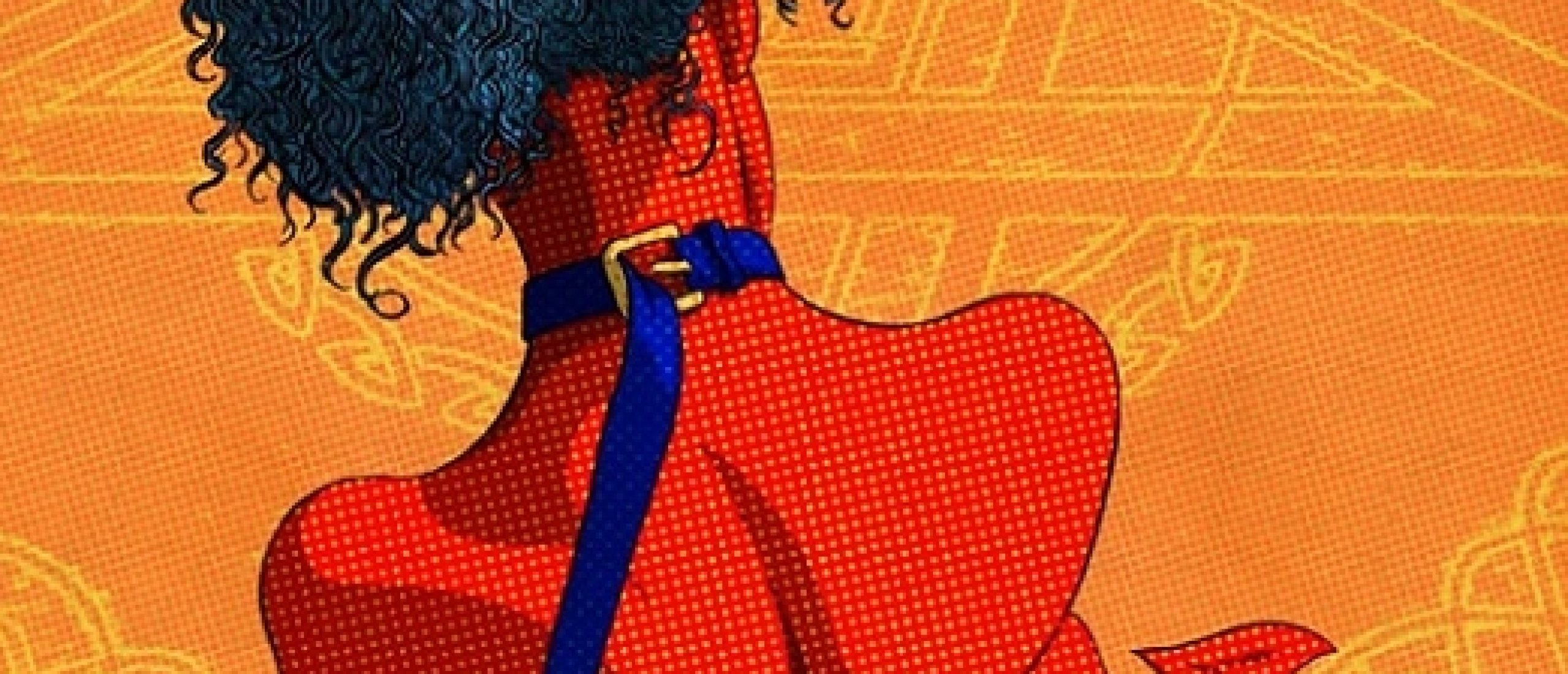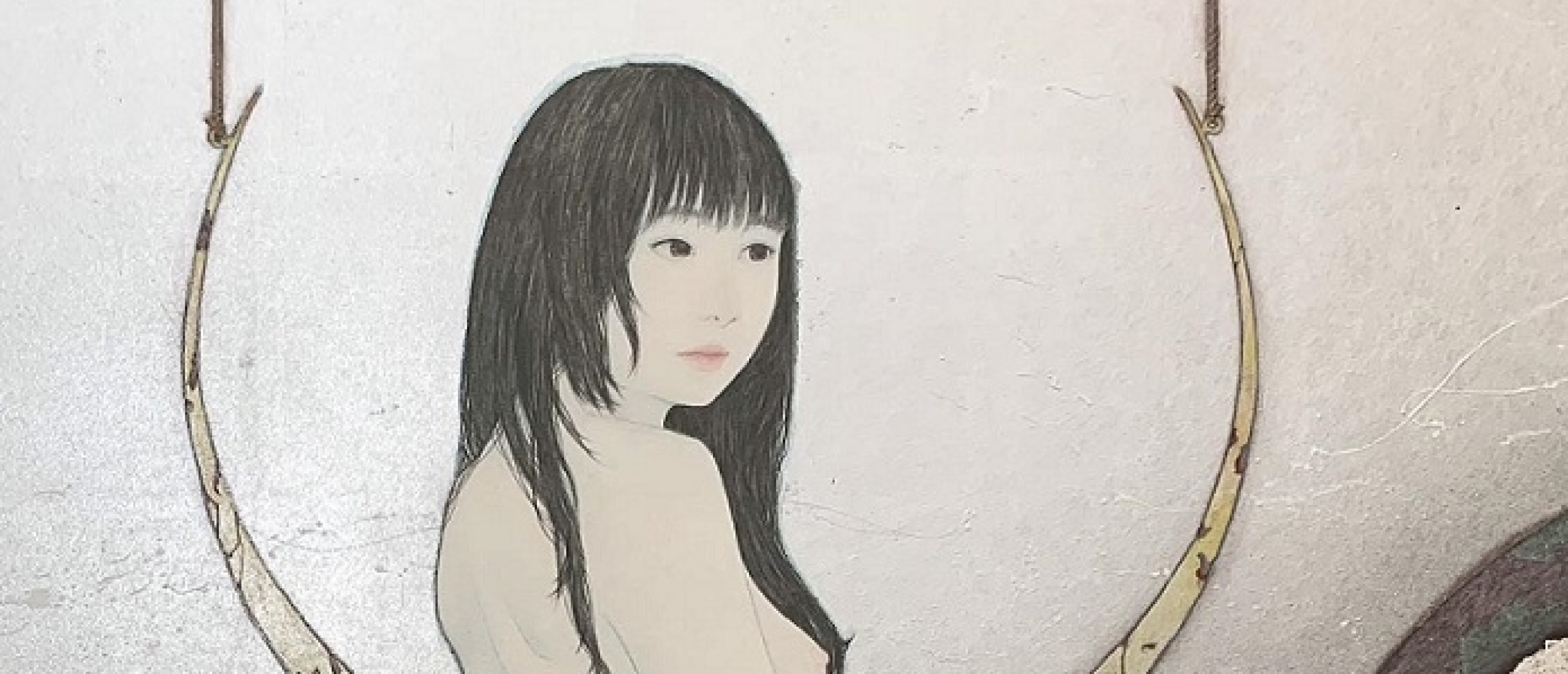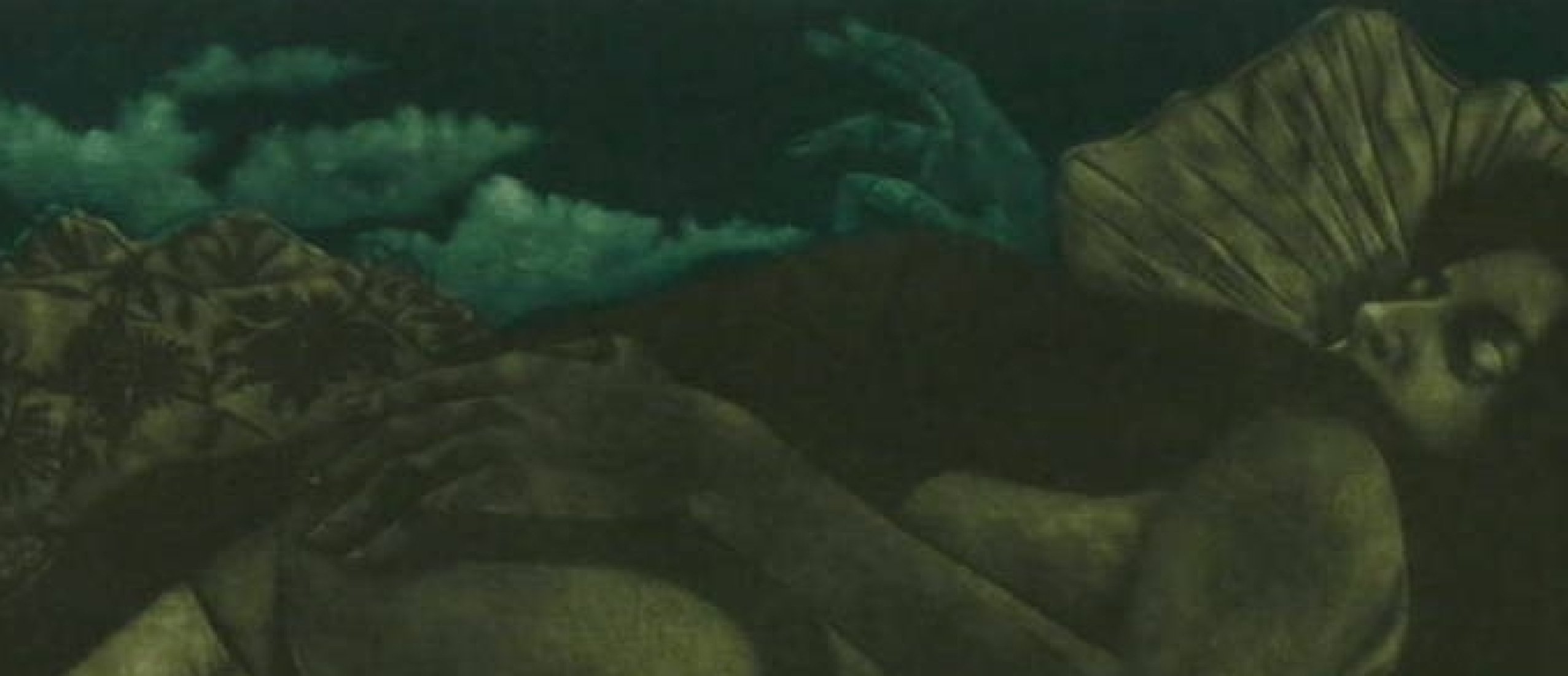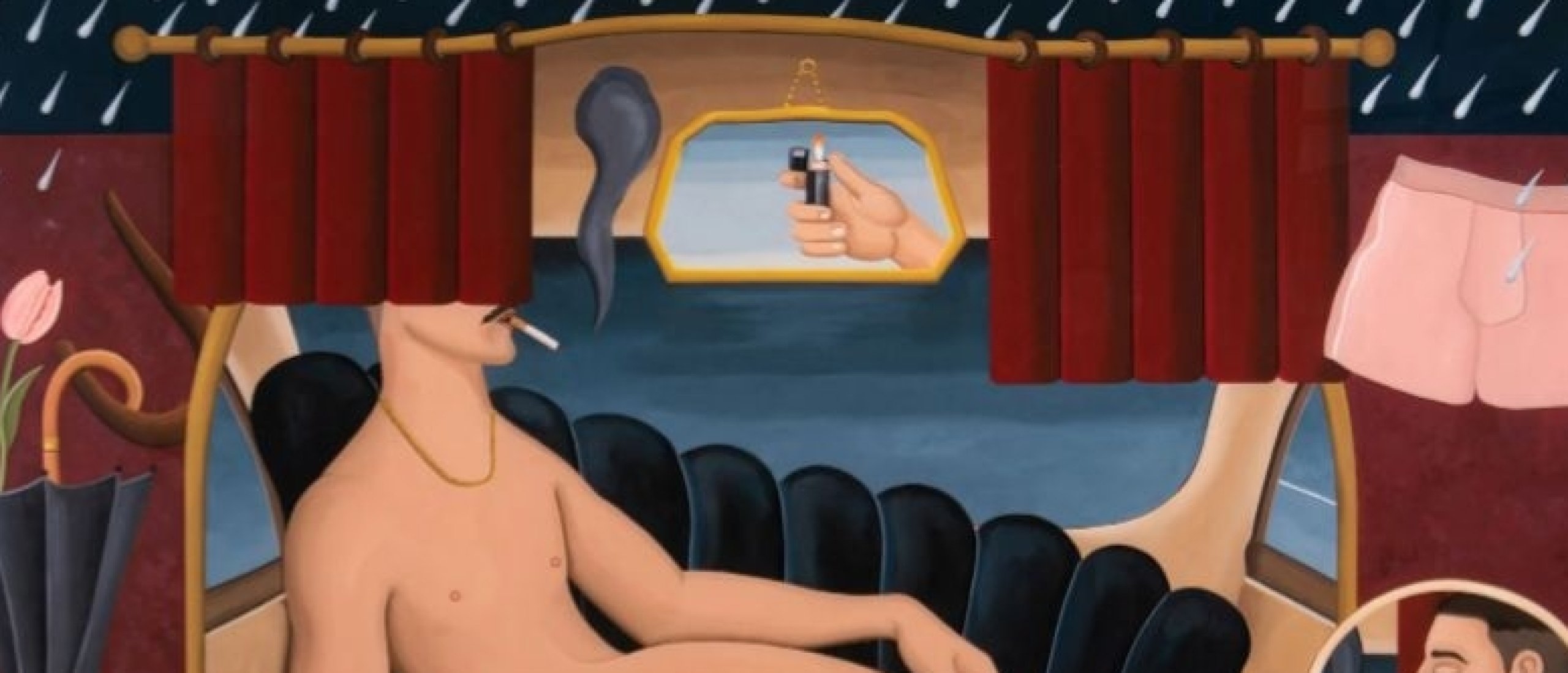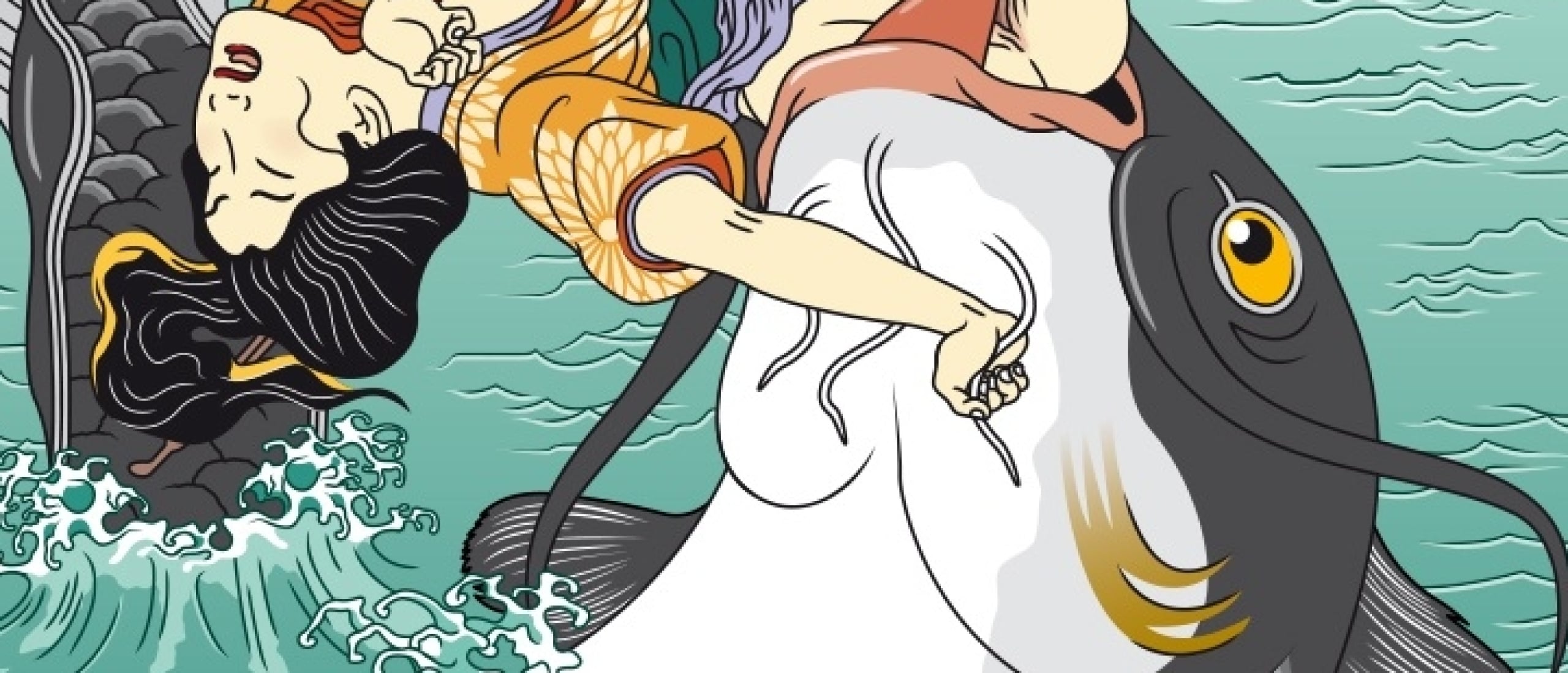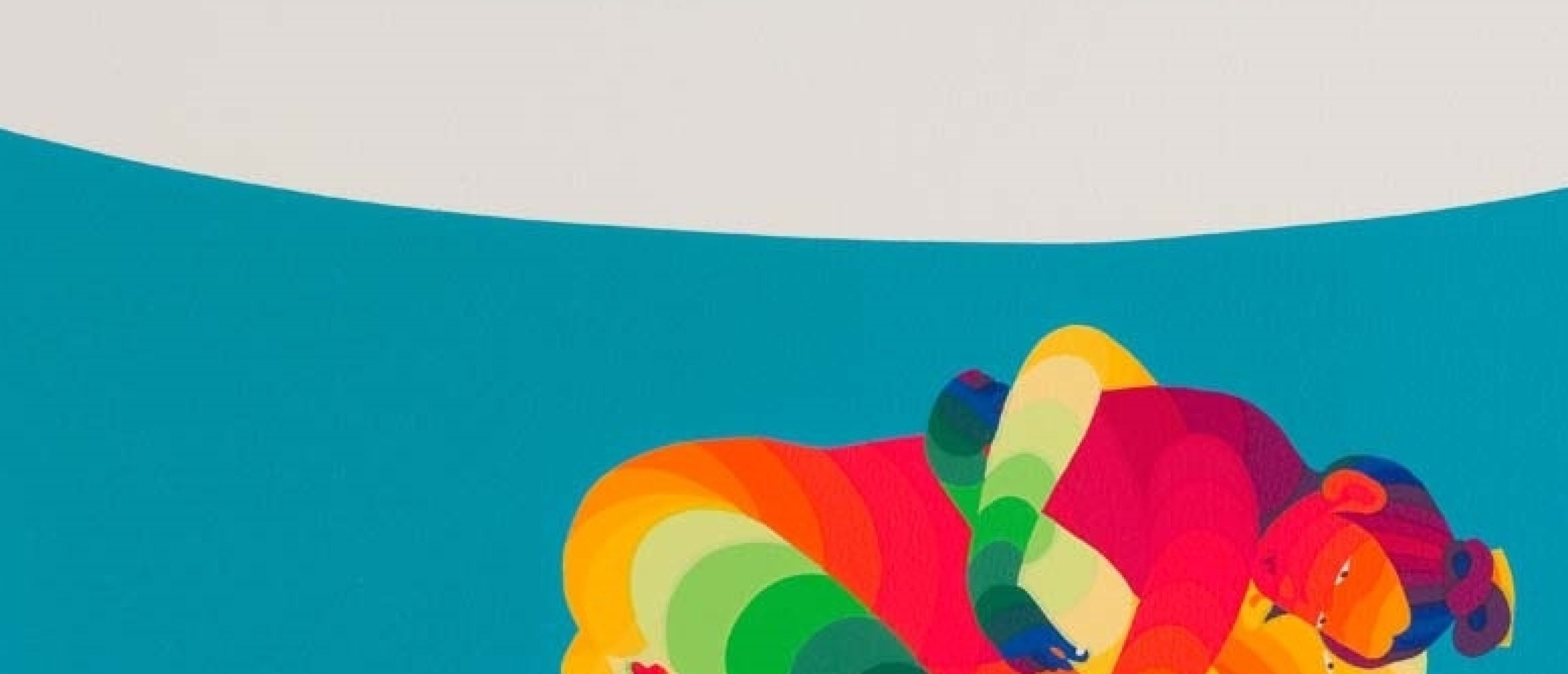
Ay-O (b. 1931) is a conceptual painter and printmaker, partly promoted by Yoko Ono in the 1960s. He made the rainbow his trademark years before it became an LGBTQ movement symbol. Yet, he also connected it with sex reimagining classic Shunga oeuvres by Hokusai, Harunobu, and other masters.
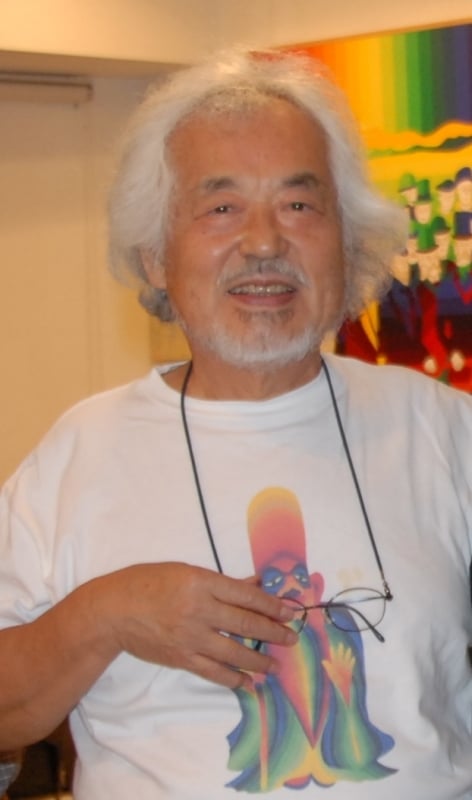
Fig. 1. Ay-O, 2000s (Wikipedia.org)
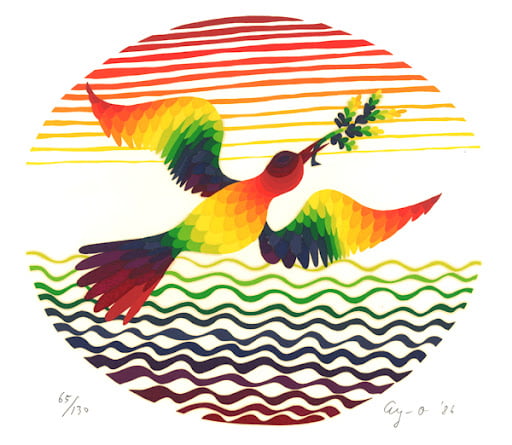
Fig. 2. Noshi no tori A 1986 (tokinowasuremono.com)
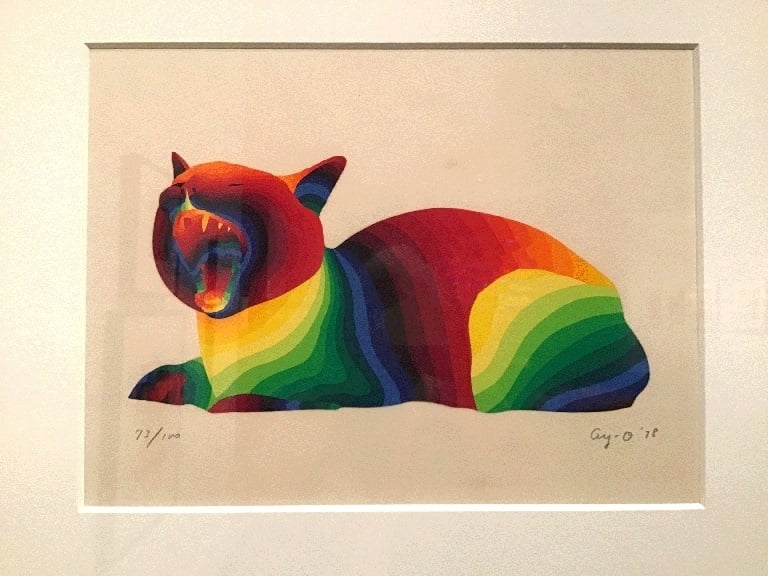
Fig. 3. Rainbow cat (vindevie.me)
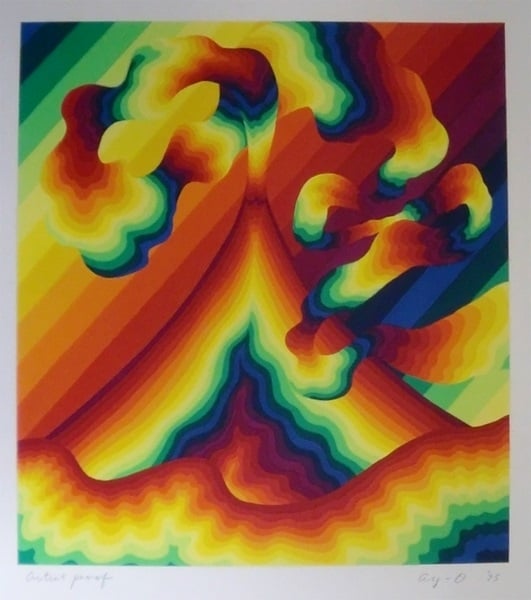
Fig. 4. Volcano 1975, silkscreen (tokinowasuremono.com)
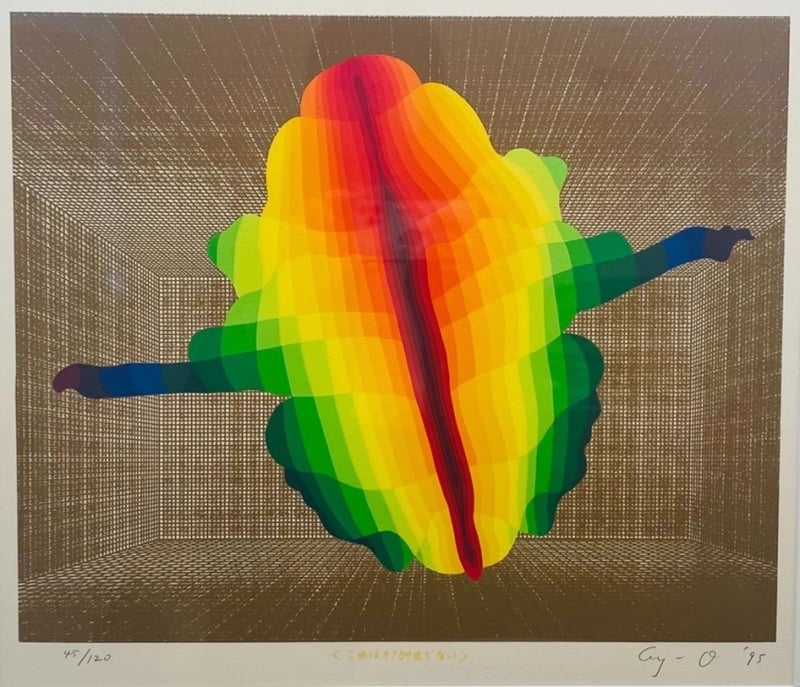
Fig. 5. This Is Not Kafka’s Insect, 1995 (whitestone-gallery.com)

Fig. 6. Magritte, 1977, with Ay-O rainbow signature (tokinowasuremono.com)
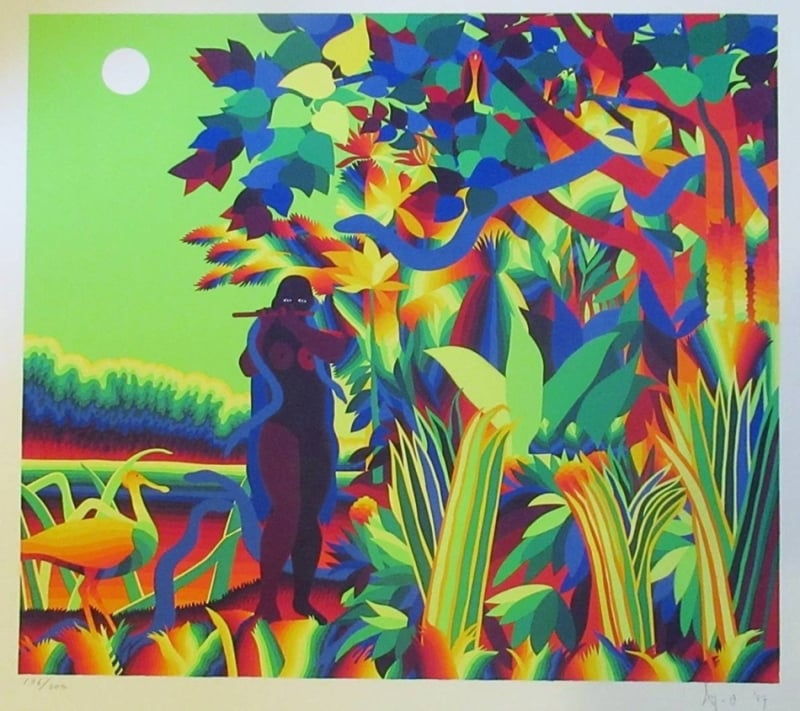
Fig. 7. auctions.yahoo.co.jp

Fig.7a
Looking at the Clouds Ad Nauseam
Ay-O, whose real name is Takao Iijima, was born in 1931 in Ibaraki Prefecture (Honshu). He graduated from the Tokyo University of Education in 1954. Already at the university, he participated in the Demokrato group, which, among other artists, also included photographer Eikoh Hosoe. In 1955, under the influence of French philosophy, Ay-O established the Jitsuzonsha group, which some translate either as "Existentialists" or "Realists." Let's mention that the artist's adopted name Ay-O, which appeared during Iijima's third year at the university, is connected with existentialist philosophy. It combines two kanjis: ai (靉) from aitai (drifting clouds) and ou (long o - 嘔) from the title of Jean-Paul Sartre's novel Nausea translated into Japanese as 'Outo'.
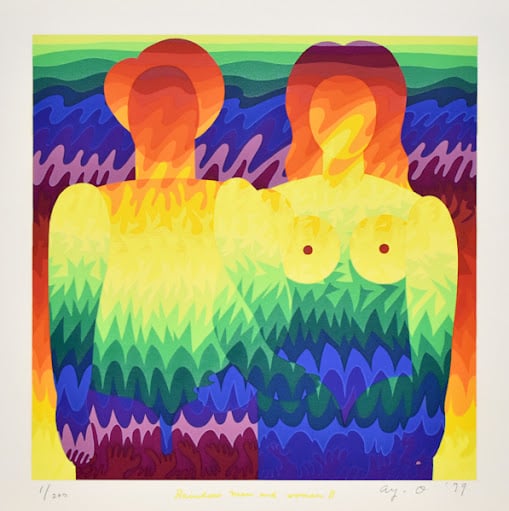
Fig. 8. Rainbow Man and Woman A, 1979 (tokinowasuremono.com)
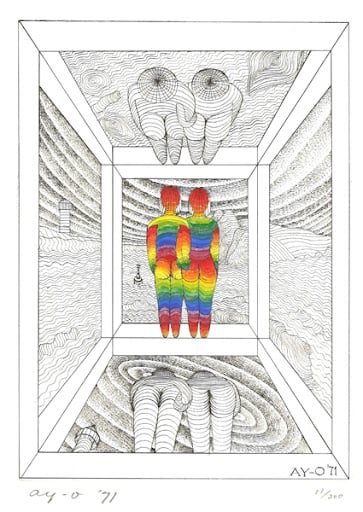
Fig. 9. “Ah! The Sea of E A”, 1971 (tokinowasuremono.com)
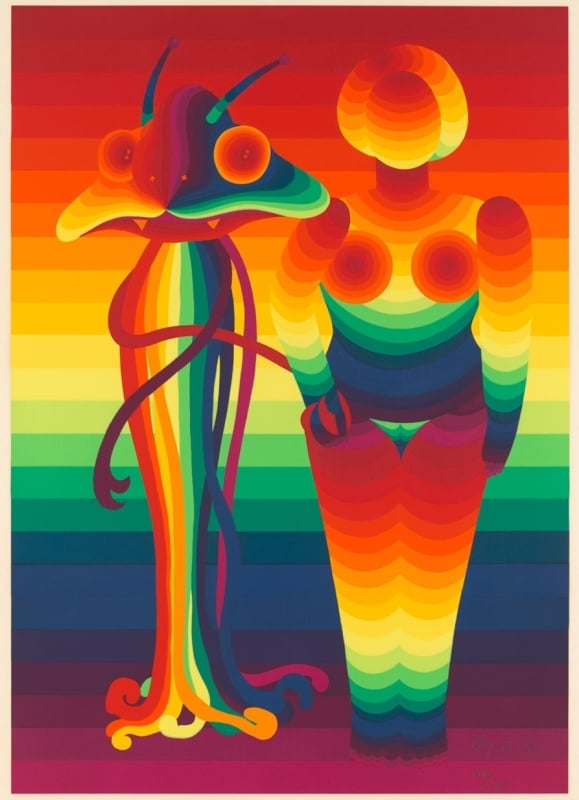
Fig. 10. Well! Well! Well! (from 'Rainbow landscape' series) 1974 (collection.qagoma. qld.gov.au)
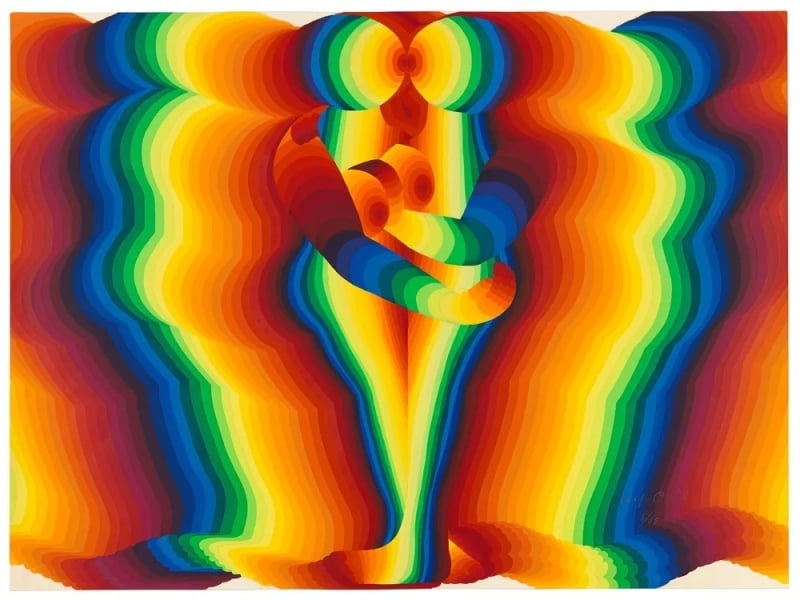
Fig. 11. Rainbow Night 10 (smithsonianmag.com)
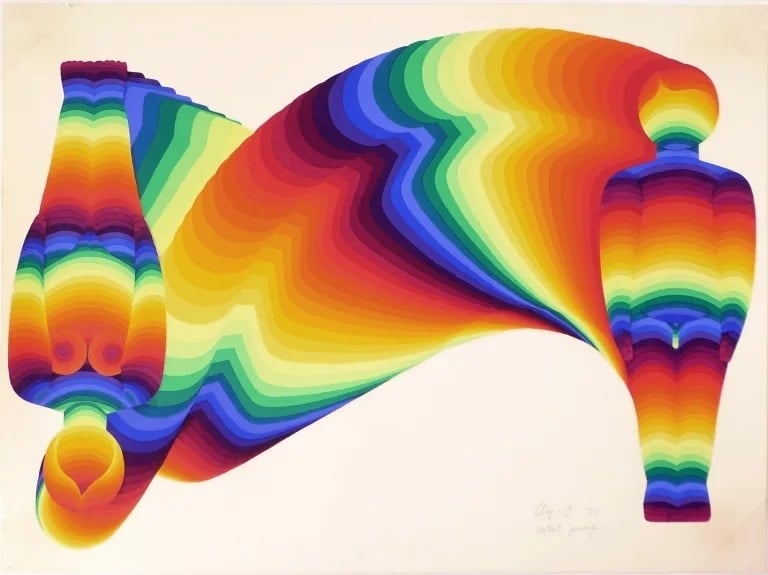
Fig. 12. Rainbow Night (vindevie.me)
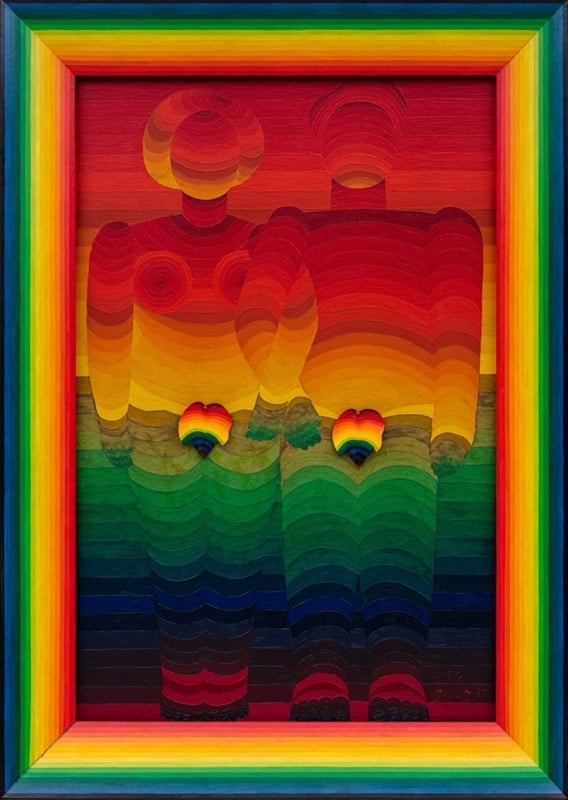
Fig. 13. Adam and Eve, oil on canvas, 1967 (hirohiroartspace.com)
They All Said No
In 1958, Ay-O relocated to New York City. The period from 1958 to 1961 was, probably, the hardest in the artist's career. Interviewed by the poet Yarita Misako in 2014, he recalled: There were 140–150 galleries in New York, and no one wanted me. [laughs] I tried it three times. Yeah, and sometimes, I would roll up and bring a large piece, as big as this room. They all said "No." According to Ay-O, the gallerists only accepted abstract action paintings a la Pollock, so eventually he tried to adopt his manner but quickly got fed up with it and crossed out all New York-style paintings he made. After that, the artist started seeking a way to reuse canvases and lined them up so that they shaped "a funny-looking ragged house, which I turned into artwork" (Tea House, 1961). The installation attracted the attention of other unconventional artists such as Yoko Ono. She introduced her compatriot to George Maciunas, an avid art historian and gallerist who promoted the Neo-Dada group Fluxus. Things started building up, and five years later, Ay-O represented Japan at the Venice Biennale. As it often happens, what seemed a failure somehow turned out to be a fortune.
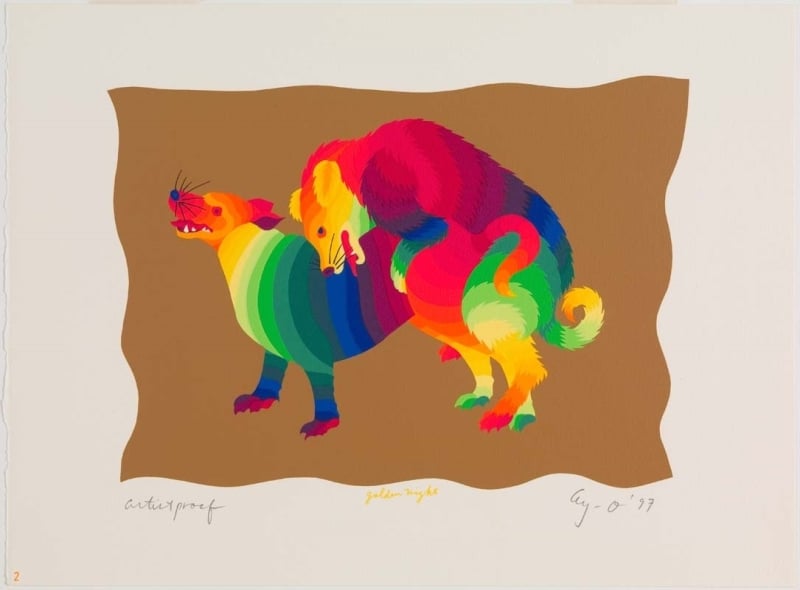
Fig. 14. Golden Night, from 'An anthology of Shunga ' (agoma.qld.gov.au)
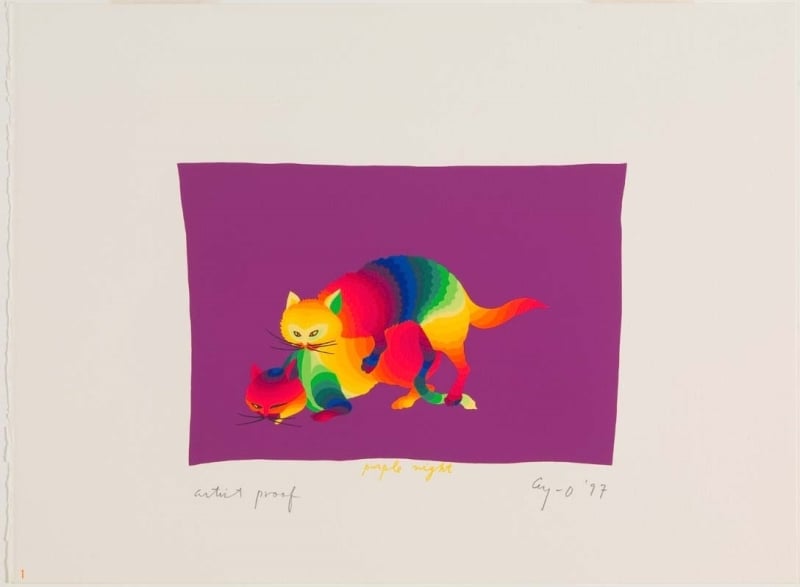
Fig.15. Purple Night, from 'An anthology of Shunga ' (agoma.qld.gov.au). These copulating cats are copied from this Harunobu design
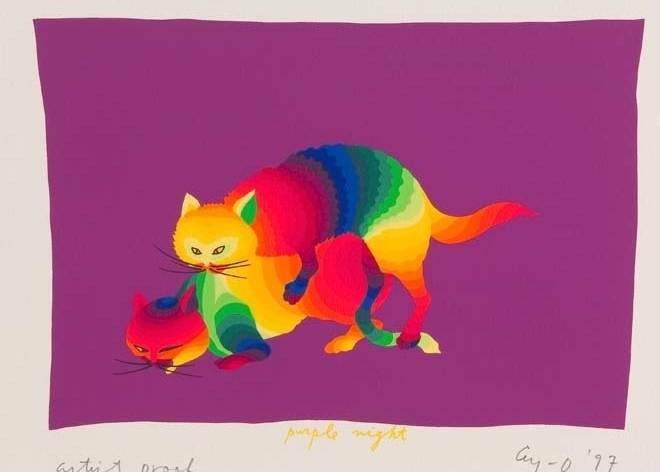
Fig.15a
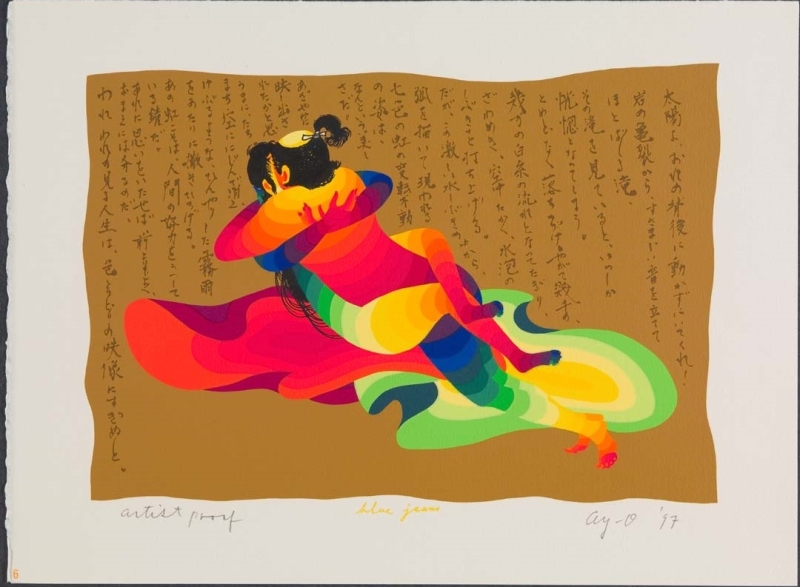
Fig. 16. Blue Jeans (qagoma.qld.gov.au)
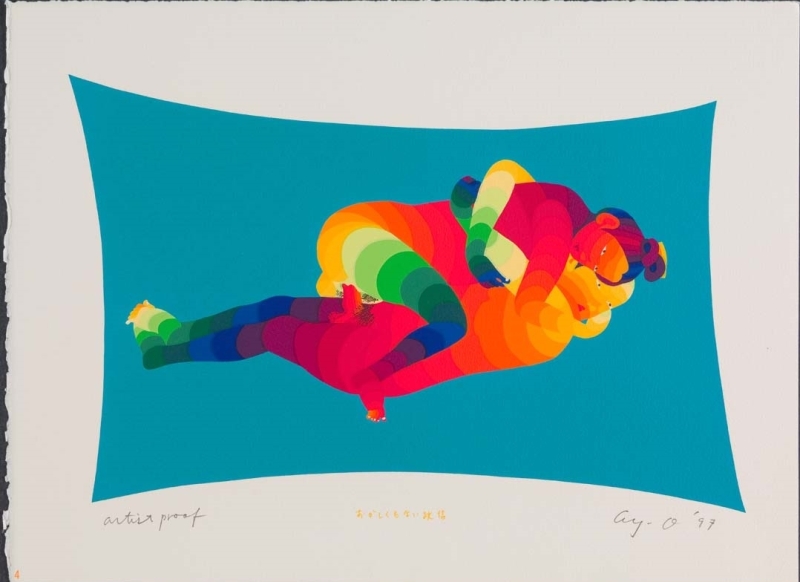
Fig.17, Flat Masanobu, from 'An anthology of Shunga ' (qagoma.qld.gov.au)
Become a Premium member now and discover more about Ay-o's shunga oeuvre, his tactile Finger Boxes, its aesthetics and many images of his reimagined shunga work.
Click HERE for the trip of naked lust in the paintings by Anzor Valetov
Sources: Ay-O, Oral history, interviewed by Yarita Misako and Kakinuma Toshie (kcua.ac.jp/arc/ar/ay-o-oral-history_en/); Kunio Motoe. Ay-O, Why Rainbows? (whitestone-gallery.com); Roger Catlin. Take a Radiating, Immersive Trip Into ‘Ay-O’s Happy Rainbow Hell’ (smithsonianmag.com).
Let us know your thoughts on the "Rainbow" sensuality by Ay-O in the comment box below!

